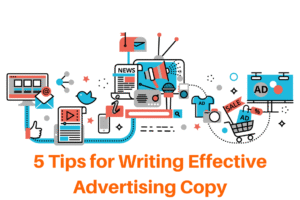How to Create Highly Targeted Ad Copies That Convert: A Complete Guide
In the noisy world of digital marketing, simply running ads isn’t enough—you need create highly targeted ad copy that speaks directly to your ideal audience. Whether you’re running campaigns on Facebook, Google, LinkedIn, or Instagram, the words you use can make or break your ROI.
Good targeting gets your ad in front of the right people. Great copy turns those people into clicks, leads, and customers.
In this blog, you’ll learn exactly how to write ad copy that grabs attention, resonates with your audience, and drives action.

Why Targeted Ad Copy Matters
Most people don’t click on ads that feel generic. Think about it: When was the last time you engaged with a bland ad saying “Buy Now”?
Highly targeted ad copy:
-
Speaks to a specific pain point
-
Connects with the reader’s emotions
-
Offers a solution they care about
-
Feels like it’s written just for them
And when your copy does that, click-through rates go up, cost per lead goes down, and conversions improve dramatically.
Step 1: Know Your Audience Better Than They Know Themselves
Before you write a single word, you need clarity on who you’re speaking to.
Ask:
-
Who is my ideal customer?
-
What are their demographics (age, location, job)?
-
What are their biggest pain points?
-
What goals or desires do they have?
-
What words or phrases do they use to describe their problems?
Tools to Help:
-
Facebook Audience Insights
-
Google Analytics
-
Reddit, Quora, Amazon reviews
-
Customer surveys or interviews
The deeper the insight, the more relevant your copy will be.
Step 2: Craft a Hook That Grabs Attention
People scroll fast. You have 3 seconds or less to stop them.
Your hook (the first line of your ad) needs to be:
-
Intriguing
-
Emotionally resonant
-
Specific to the target audience
Examples of strong hooks:
-
“Struggling to grow your Instagram? You’re not alone.”
-
“Tired of knee pain ruining your workouts?”
-
“Want more leads without increasing your ad spend?”
Avoid clickbait. Instead, lead with a real problem or promise that matches what your audience cares about.
Step 3: Highlight the Pain—Then Offer Relief
Once you’ve got their attention, dive into the pain point your product or service solves.
People are more motivated to avoid pain than to gain pleasure. A good ad reminds them what’s wrong—and shows how you can fix it.
Formula:
-
Agitate the problem – Make it feel urgent and personal.
-
Introduce your solution – Clearly explain how your offer helps.
-
Back it up – Use proof, social proof, or benefits to build trust.
Example:
“You’ve tried every productivity app, but your to-do list keeps growing. Our smart planner doesn’t just track tasks—it helps you finish them. Join 12,000+ users who finally took control of their day.”
Step 4: Use the Right Language (Mirror Their Voice)
Great ad copy sounds like your audience talks. If they’re casual, be casual. If they’re professional, use that tone.
This is where your audience research pays off. Mirror the language, slang, tone, and phrasing your audience uses.
Example:
-
A fitness coach targeting busy moms:
“No time for the gym? Try 15-min home workouts made for moms like you.”
-
A SaaS tool for B2B marketers:
“Tired of switching between 7 tools to run one campaign? Simplify with our all-in-one marketing dashboard.”
Pro Tip: Use your customers’ own words from reviews, testimonials, or surveys in your ads.
Step 5: Focus on Benefits, Not Just Features
People don’t care about what your product is. They care about what it does for them.
Instead of:
“Our app includes real-time collaboration tools and task management.”
Say:
“Save hours of back-and-forth with real-time edits your whole team can see instantly.”
Always translate features into benefits. Ask: “So what?” after each feature to get to the real value.
Step 6: Include a Clear and Compelling CTA
Every ad needs a Call to Action that tells people what to do next.
Examples:
-
“Download Your Free Guide”
-
“Start Your 7-Day Trial”
-
“Book a Free Call”
-
“Shop Now – Limited Stock”
Make it urgent if possible. Phrases like “limited time,” “only 10 spots left,” or “offer ends Sunday” can increase conversion.
Step 7: Test Multiple Variations
No copy is perfect on the first try. The best marketers test and iterate.
Test different:
-
Hooks
-
Benefits
-
CTAs
-
Formats (short vs. long-form)
-
Emotions (fear vs. excitement)
Use A/B testing to find what resonates most with your audience.
Bonus Tips for Highly Targeted Ad Copy:
-
Use numbers: “Increase sales by 43%” is more powerful than “Grow your sales.”
-
Leverage social proof: Mention how many users, customers, or followers you have.
-
Add emojis (when platform-appropriate): They help break text visually and add personality.
-
Keep mobile users in mind: Use short paragraphs and easy-to-read formatting.
Final Thoughts: Relevance + Resonance = Results
Writing highly targeted ad copy isn’t about being clever—it’s about being clear, specific, and audience-first.
When you:
-
Understand your customer deeply
-
Speak their language
-
Address their pain points
-
Show them the outcome they want
…your ads stop being “just another scroll” and start becoming powerful conversion tools.
